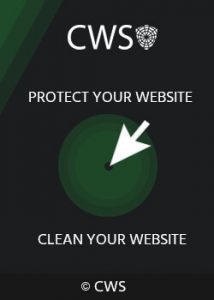
Spam is not just annoying, It can cause significant harm to your website as well as your business. Your website may get blacklisted, all further emails sent from your address may be classified as Spam even if those will not contain Spam content or all the emails will go straight into the “Spam” box.
But the biggest harm will be to the reputation of your business. Imagine, what will recipient’s think about your company, if the email you sent are calmly sitting in the “Spam” box. “Spamer” is not that term you want your business to be associated with, is it?
So, let’s dive into this topic. We will sort through all possible reasons why your website may distribut Spam.
Email Spam may be sent if the website is hacked
It is the most common reason why Spam is being sent. Once your website or server were hacked, hackers get all the information they need to edit the website’s code, upload malicious files, put spam scripts into the catalogue of the site or server. This will allows hacker to send Spam from your website along with other damage attacker can deal.
To get rid of malicious code and files and to solve the Spaming problem, you will need to check the whole website (or server). You will need to scan every file for scripts that hackers may have added to your code.
But cleaning is never enough. You should also repair everything that was damaged by the hackers, check your website’s protection, get rid of all vulnerabilities and think about additional protection of your website. The CWIS antivirus and our experienced team will stay on alert 24/7 to protect your website from hacker attacks.
What if my website was not hacked, but recipients are receiving Spam from my email address?
Yes, this is quite possible too. And such situations are as common as website hacks.
Spam can be sent with the help of vulnerable scripts that are responsible for emails
If the website contains scripts that don’t check values in requests, there is a big chance that someone will use them to send Spam. For example, using the Virtuemart plugin in Joomla CMS any user could send random message to any random recipient.
Another popular option that allows hackers to send Spam are feedback forms that have no protection from bots or this protection is too weak. Modern bots can easily pass through some simple captchas. But if the feedback form has no protection at all, you can be almost 100% sure that your email recipients will receive Spam. The most vulnerable are “call me back”-like forms that are implemented as pop-up window with AJAX-handler.
This problem can be solved by adding a complicated “I am not a bot” verification field.
Spam can be caused by massive user’s registrations or hacker’s attacks
Websites that have a logging function may generate a large flow of emails with notifications about registration. There is a bot that creates and sends requests to the website and as a result new users are created and notifications are sent to the website owner.
Even though it is not Spam, your hoster still can block the email service for the website because the amount of emails exceeds the limit.
Again, this problem is solved by adding a mechanism that will protect the website from bots. Also, you can temporarily disable notifications that are sent to the administrator.
There is one more reason why Spam can be distributed. And it is pretty ironic. Every public web-resource is being almost constantly attacked by hackers and bots, who are looking for any vulnerabilities. And if the website is protected by antivirus or script that tracks attacks, then every hacker’s request will create a notification and send an email to the administrator.
The website can be attacked up to several dozens per second. This causes a massive flow of notifications which hoster considers as a Spam. As a result, hoster can block the email service or even the whole website.
The domain’s email can be hacked as well
The last thing that comes to website owner’s mind when he is blocked for Spam is to check if domain’s emails are hacked. Hackers get access to the needed email by trying random passwords, intercepting or stealing logging information. They can use trojans or spying programs that track symbols typed on mobile or computer keyboard.
Spam can be sent with sender’s address changeling
Website owners, whose email box is placed on hoster’s email server, are receiving Non Delivery Reports pretty frequently. The body of the message can contain any spam content. Of course, the website owner has never sent those messages. So why did this happen?
First reason is – your email was hacked. And we talked about it earlier. The second one is – letters can be sent from a fake email.
For example, hackers can use random symbols instead of user’s name – [email protected]. And if the email is not delivered to recipient, this letter will return to mail@website.com. The problem is that the amount of those emails can be pretty large. Also, hackers can use an existing email address in the “From” field. A massive amount of returning emails creates a Spam flow.
Taking into account all of the situations we talk about in this article, you should really think about the protection of your website, repair all vulnerabilities and configure your email server properly. Cobweb security team will be glad to help you handle all these complicated actions so you will never become a victim of hacker attacks.

